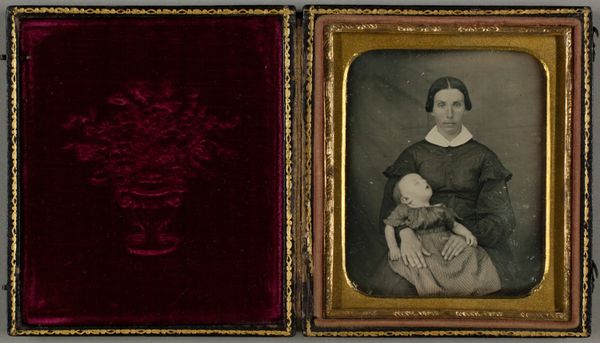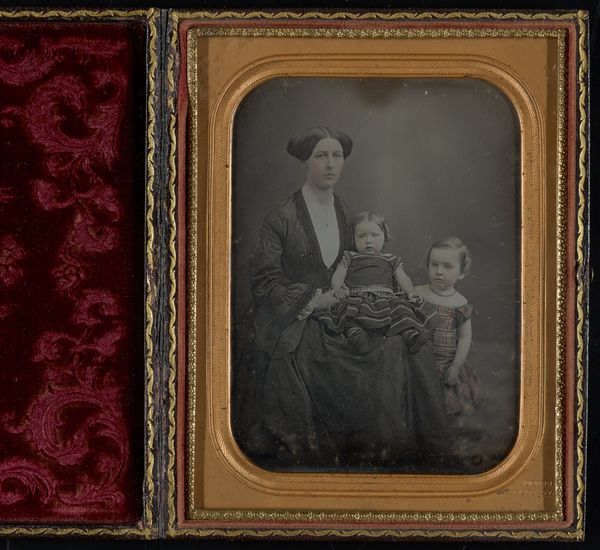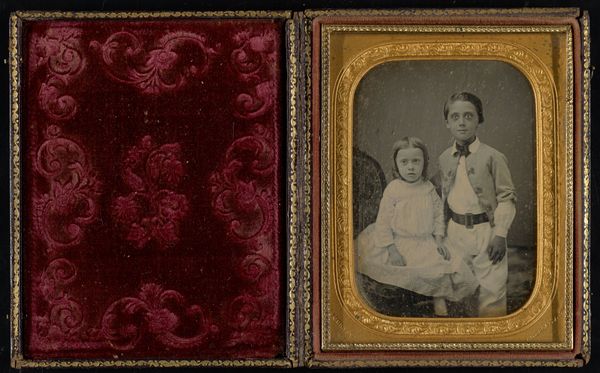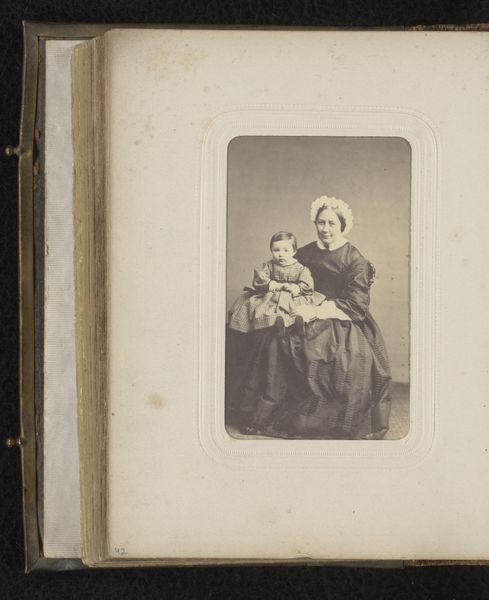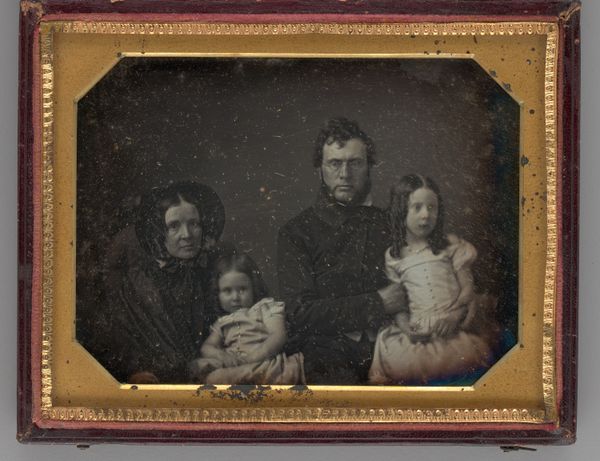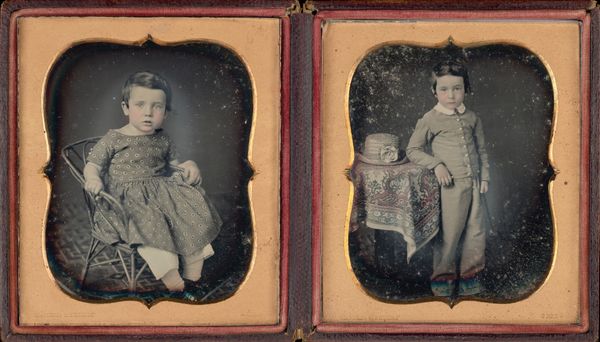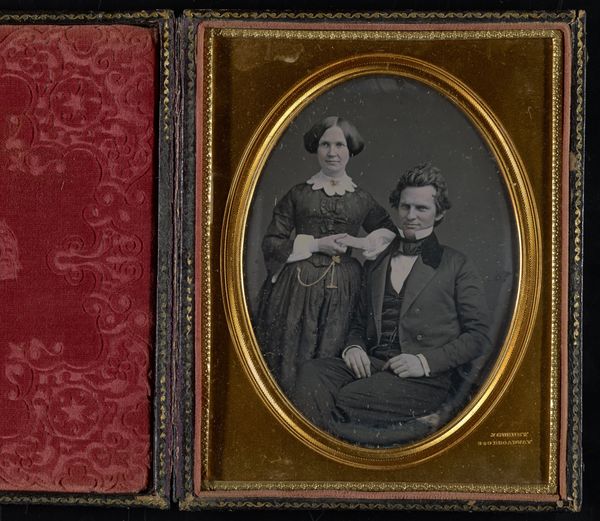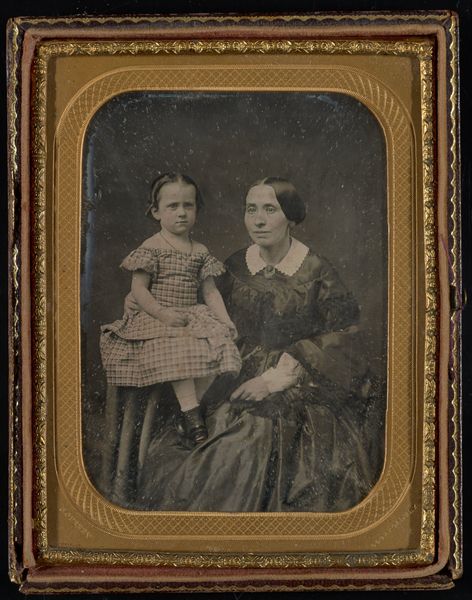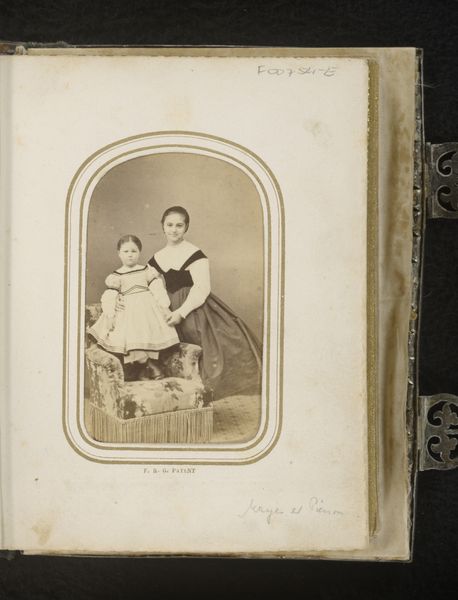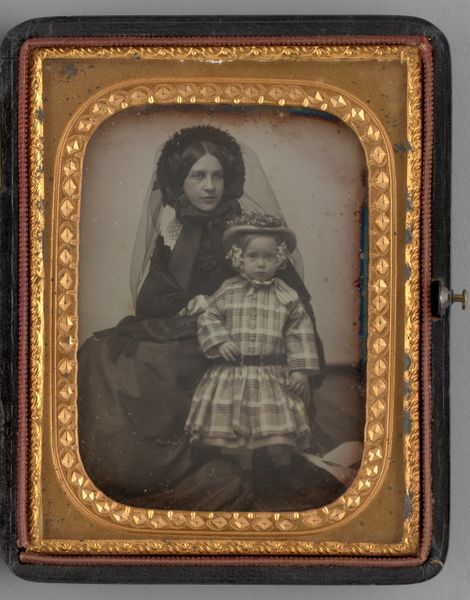![Untitled [portrait of a mother and two children] by Jeremiah Gurney](/_next/image?url=https%3A%2F%2Fd2w8kbdekdi1gv.cloudfront.net%2FeyJidWNrZXQiOiAiYXJ0ZXJhLWltYWdlcy1idWNrZXQiLCAia2V5IjogImFydHdvcmtzLzQ2MTJhYjM3LWE1YTgtNGMyYS1iZTBhLWRlZjEyOWU1MTg4MS80NjEyYWIzNy1hNWE4LTRjMmEtYmUwYS1kZWYxMjllNTE4ODFfZnVsbC5qcGciLCAiZWRpdHMiOiB7InJlc2l6ZSI6IHsid2lkdGgiOiAxOTIwLCAiaGVpZ2h0IjogMTkyMCwgImZpdCI6ICJpbnNpZGUifX19&w=3840&q=75)
Untitled [portrait of a mother and two children] c. 1844 - 1852
0:00
0:00
daguerreotype, photography
#
portrait
#
daguerreotype
#
photography
#
genre-painting
#
realism
Dimensions: 5 1/2 x 4 1/4 in. (13.97 x 10.8 cm) (image)5 7/8 x 4 11/16 x 13/16 in. (14.92 x 11.91 x 2.06 cm) (mount)
Copyright: Public Domain
Editor: This daguerreotype, captured by Jeremiah Gurney between 1844 and 1852, presents a formal portrait of a mother and her two children. The silver-toned image, housed in what appears to be an ornate case, feels incredibly staged and still. What catches your eye when you consider its artistic merit? Curator: It is paramount to acknowledge the aesthetic construction manifest within this photographic object. Note the calculated arrangement of the figures. The mother, positioned centrally, anchors the composition. Observe how the children's garments contrast against the dark backdrop, drawing the viewer's gaze. Further, contemplate the tonality and how it impacts the perceived texture and depth. Does the lighting contribute to the formal reading of the scene, and how? Editor: I see that contrast you mention; it’s quite striking. Does the dark background force our focus onto the subjects and how they are arranged? The lines of their dresses, the way the light catches the faces... it feels very deliberate. Curator: Precisely. It is crucial to examine how Gurney manipulates the technical constraints of the daguerreotype process to generate a structured visual experience. Notice the composition; the dark, almost indistinct background forces the viewer's focus to the subjects' placement within the frame, establishing visual relationships that determine meaning. Moreover, ponder on the case itself. Its velvety interior and gilded details, does this elaborate framing enrich or detract from our perception of the photograph itself? Editor: That's a fascinating point about the framing. It adds a layer of opulent artificiality. This approach really underscores the formal qualities rather than any sense of candidness. I definitely have a richer understanding now! Curator: Indeed. By focusing on these structural components, we decode not merely an image but an intentionally crafted arrangement intended to convey specific meanings beyond just representational likeness. The art lies within that construction.
Comments
No comments
Be the first to comment and join the conversation on the ultimate creative platform.
